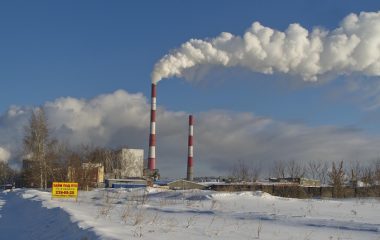
Photo: hangela / Pixabay
The Government of Slovenia adopted the National Strategy for a Coal Exit and the Restructuring of Coal Regions in Line with Just Transition Principles, defining 2033 as the year by which the coal phaseout would be completed. The new Czech government announced the use of coal in the country would cease by the same year at the latest.
The strategy is necessary for Slovenia’s energy transformation to ensure a fair transition as quickly as possible for all workers and their families who will be affected, the government said in a statement. The strategy determines 2033 as the deadline for ending coal use for electricity production.
Community’s active participation in processes in Slovenia
The strategy focuses on the fair transition of both coal regions in Slovenia – the Savinjska-Šaleška (SAŠA) region and Zasavje. The document also defines the key aspects of the planned closure of the Velenje coal mine in technical terms and the impact on employees, the community and the protection and preservation of the environment.
The strategy defines aspects of mine closure for both employees and the community
Stakeholders from both areas were active in the preparation of the document. Representatives of trade unions, municipalities, formal and informal organizations shared data and opinions through various methodologies. The comprehensive environmental impact assessment was implemented into the strategy, according to the announcement.
Slovenia and its coal regions will have unhindered access to the European Union’s Just Transition Fund, which is providing EUR 248.38 million from 2021 until 2027.
State-owned power utility Holding Slovenske elektrane (HSE) welcomed the adoption of the strategy and the restructuring of coal regions and said it would restructure the Velenje mine and the Šoštanj thermal power plant.
Slovenia’s 600 MW coal plant Šoštanj 6 was controversially brought online in 2015 and was immediately at risk of becoming a stranded asset Europe Beyond Coal said. “From day one, it was abundantly clear that Šoštanj 6 was not financially viable, and that Slovene taxpayers would be left footing the bill, and we have been proven right. The responsibility for this failure lies squarely with the politicians, energy experts, and investors who banged the drum for this coal project, and with the EIB and the EBRD who endorsed it,” said Tomislav Tkalec, energy expert at Focus Association for Sustainable Development.
The Czech Republic gets a coal exit date
The new Czech government has announced in its program that the country would abandon coal by 2033. It will have to manage the transition from an economy based on fossil fuels to renewable energy. According to the Energy Regulatory Office, in 2020 the Czech Republic produced 43% of its energy from coal and 37% from nuclear power plants.
Climate activists point out 2033 is, however, three years behind the date compatible with the Paris Agreement.
Greenpeace believes the Czech Republic would phase out coal before 2030
“We see coal exit plans accelerating across Europe, and we believe that the Czech Republic will phase out coal before 2030. But even the inadequate coal phaseout date in 2033 sends a clear signal to Czech energy industry that the plans to expand Bílina mine or to retrofit old coal power plants have to be abandoned now,” said Lukáš Hrábek of the Greenpeace Czech Republic, as quoted by Europe Beyond Coal.
ČEZ announces a drastic reduction of coal in electricity production
In line with the government’s promised coal exit, ČEZ announced it would drastically reduce coal use in electricity and heating production. The state-owned utility plans to reduce the amount of electricity it produces from coal from the current 39% to 12.5% by 2030.
During the development of the plans for abandoning coal, the Czech Republic and Slovenia are looking at nuclear energy to provide the foundations of energy stability.
Coal after 2033
According to existing pledges in Europe, coal will be used after 2033 only in Poland, Turkey, Serbia, Montenegro, Bulgaria, Bosnia and Herzegovina, and Kosovo*. The new German government has ambitious climate goals and a 2030 coal exit target, compared to the previously announced 2038.
Bulgaria has three scenarios under consideration, but the latest coal withdrawal is in 2040. Montenegro has announced it would finish it by 2035. Poland, Serbia, Bosnia and Herzegovina, and Kosovo* have not yet set coal exit dates though have committed to decarbonization by 2050 at the latest while Turkey determined 2053 as the deadline for the same goal.


















Be the first one to comment on this article.